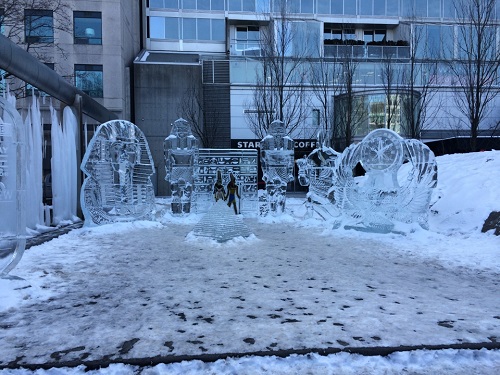Human, Bow Down
By James Patterson and Emily Raymond, excerpt
Mikky stands tall, as proud as she can look in her dirty clothing. Heer commander holds out his gun – his very own – and she hubmly accepts it, bowing don in gratitude.
She has been forgiven.
She straightens and offers him a competent, merciless smile. “Sir,” she says briskly, “who shall I terminate first?”
A noise from the hall makes MosesKhan turn and look expectantly at the door.
A moment later, it bursts open, and a creature is dragged into the room. A spitting, hissing thing that seems like a cross between an adolescent girl and a jackal. It curses and flails, but the two Hu-Bot guards hold it steady, unperturbed by such feeble, animal attempts to escape.
“Get your fake-ass hands off of me, skin job,” it screams. “I”ll yank your circuits right out of your neck!” Then the figure looks up through its tangled hair and sees Mikky. It eyes widen in shock and relief. “Mikky!” it cries. “Helps me!”
Mikky goes rigid. She recognizes the human now: 68675409M, the Corvette thief. The one who caused her fall from grace. Her grip tightens on the gun.
MosesKhan steps forward, the hint of a smile playing about his lips. “You know what to do now, MikkyBo,” he says. He gestures toward the revolver in her hand. “Make it hurt,” he tells her, loud enough for the human to hear.
Mikky nods. Considers which extremity to hit first. Would the stomach hurt more than the knees, or would she die too quickly?” She palms the gun, feeling its heft. A .44 Magnum cartridge, she guesses: powerful enough to shred the girl like a grenade.
At such close range, Mikky's going to have to work hard not to kill the girl immediately. She licks her lips. Aims for a kneecap...
“Mikky, don't do it,” the girl says desperately. “This isn't you. They've done something to you.”
Mikky's focus doesn't waver. “Correct. They have repaired my problematic glitch,” she says tonelessly.
68675409M shakes her head. “No, Mikky, that's not true. Don't let them take control,” she says urgently, her sweaty desperation coming off her in pungent waves. “I know you. You're not a robot – you”re a person.”
Person? Mikky thinks, nearly chuckling as she cocks her weapon. With an insult that hateful, the human is clearly begging to die.
A spitting, hissing thing that seems lie a cross between an adolescent girl and a jackal.
 |
| Barbie, Human, Bow Down. Photo by Elena. |



















